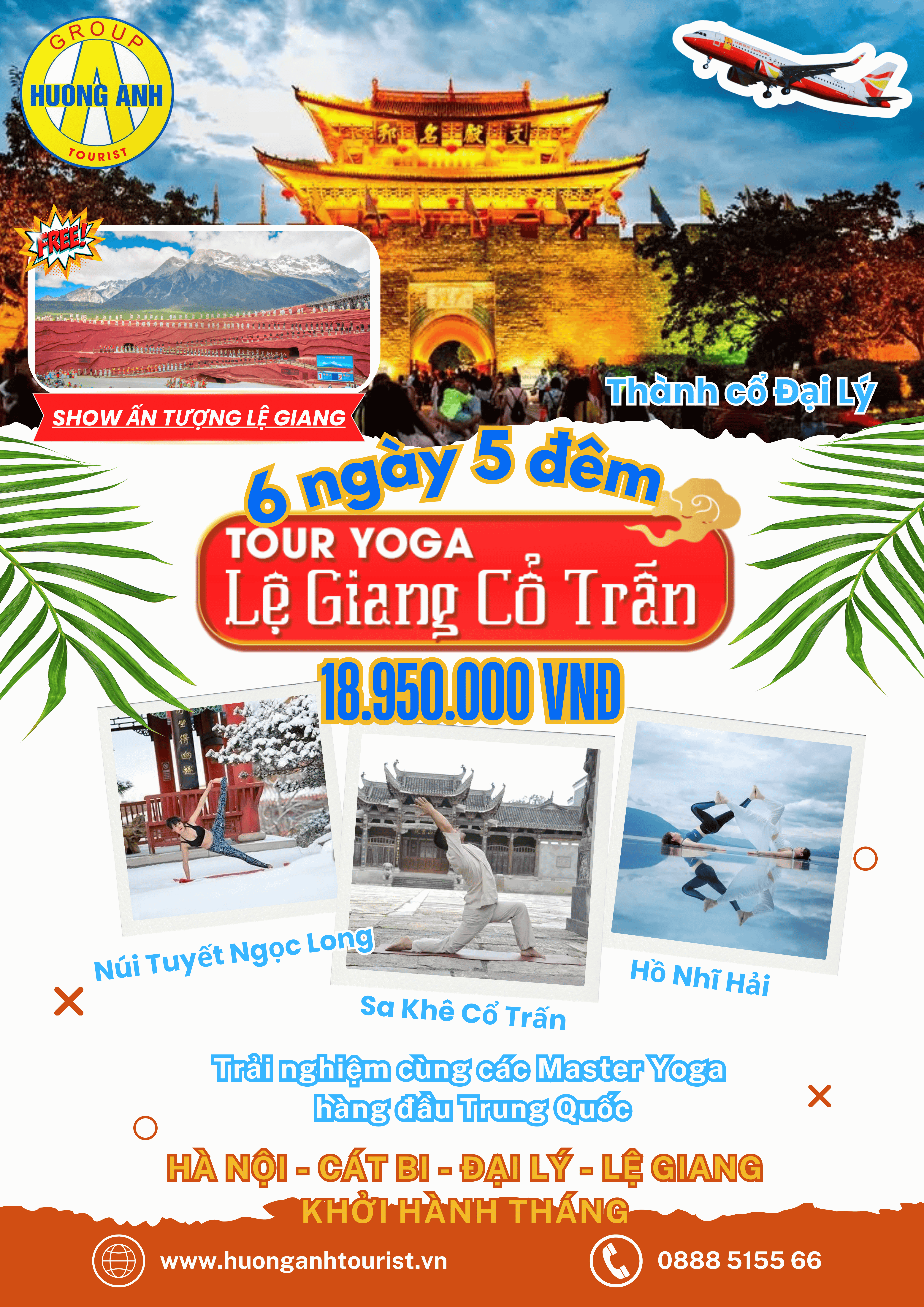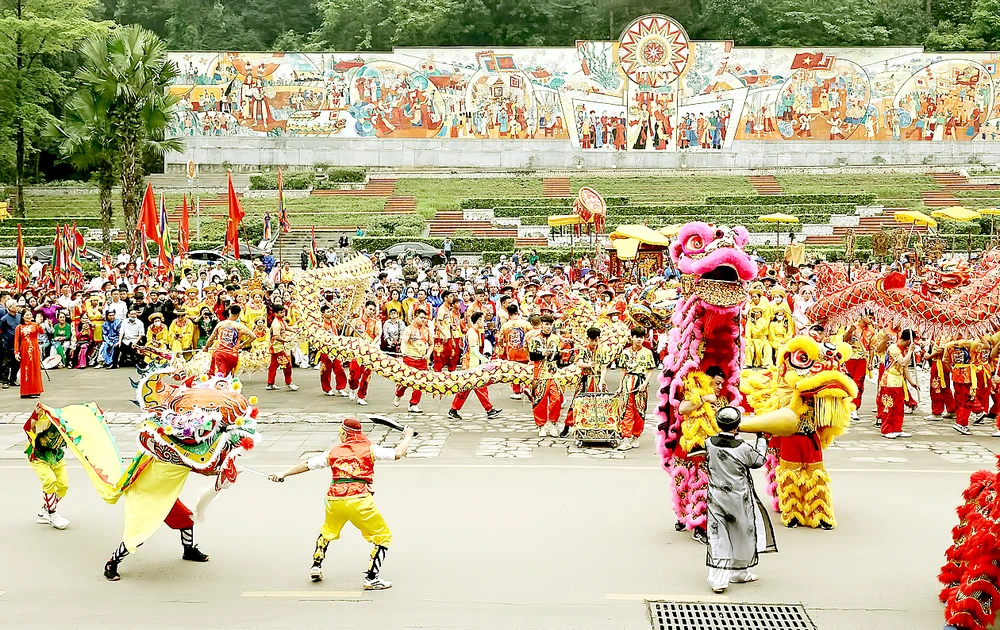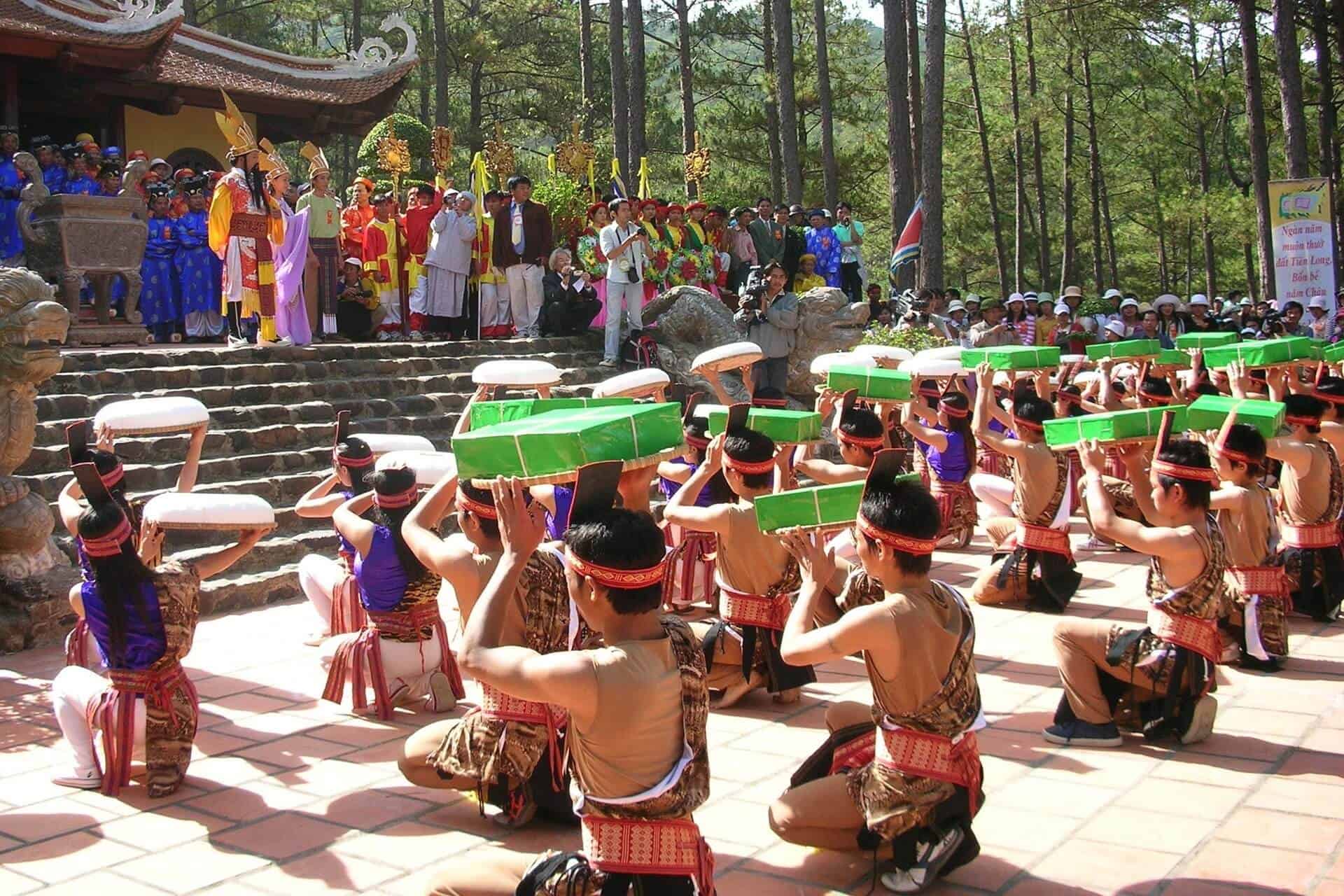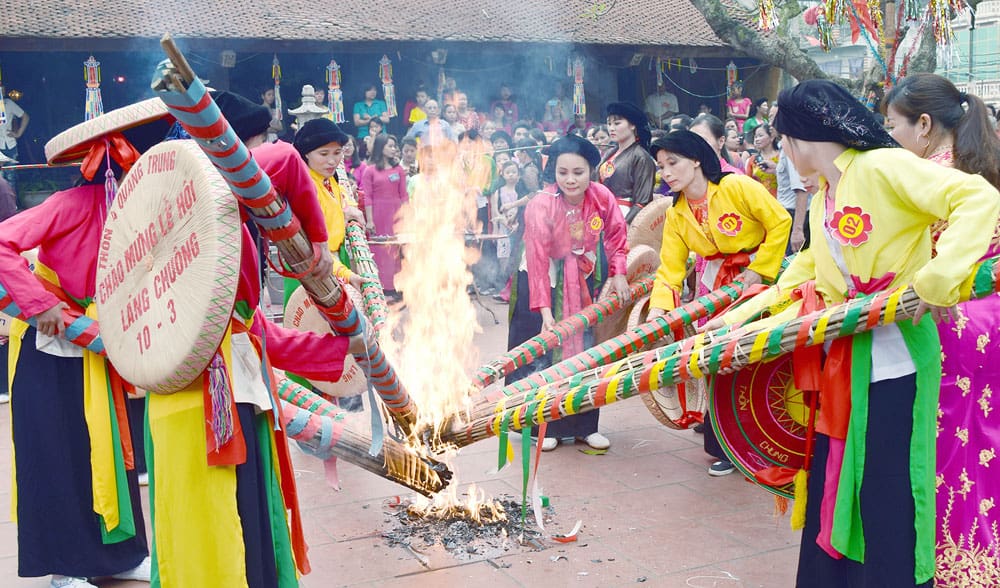
DU LỊCH HÀ NỘI – CÁT BI – LỆ GIANG – ĐẠI LÝ – 6N5Đ
Thời gian
6N5ĐGiá từ
19,0trHome /
Thời gian
Đăng ngày 28/03/2025Danh mục
The Hung Kings’ Festival (Giỗ Tổ Hùng Vương) is one of the most important national holidays in Vietnam, celebrated annually to honor the legendary founders of the Vietnamese nation. This festival, held on the 10th day of the third lunar month (usually in April), is not only a spiritual occasion but also a vibrant cultural event that draws thousands of locals and tourists alike. Here’s everything you need to know about this fascinating festival, including its history, traditions, how to attend, and tips for making the most of your visit.

The Hung Kings are believed to be the first rulers of Vietnam, dating back over 4,000 years (Source: Internet)
The Hung Kings are believed to be the first rulers of Vietnam, dating back over 4,000 years. According to legend, the eldest son of Lạc Long Quân (a dragon lord) and Âu Cơ (a fairy) became the first Hung King, founding the nation of Văn Lang, considered the precursor to modern Vietnam. This legendary dynasty had 18 generations of kings, who are credited with building the foundation of Vietnamese civilization—including agriculture, governance, and spiritual life.
Though the boundaries between myth and history blur in this ancient story, the Hung Kings represent Vietnam’s cultural roots and deep sense of national identity. They are seen as the symbolic ancestors of all Vietnamese people.
In 2007, the Vietnamese government declared the Hung Kings’ Temple Festival a national holiday, highlighting the importance of remembering the country’s roots and fostering unity among its people. In 2012, UNESCO recognized the worship of the Hung Kings as an Intangible Cultural Heritage of Humanity.

The Hung Kings are believed to be the first rulers of Vietnam, dating back over 4,000 years
(Source: Internet)
The main celebrations take place at the Hung Kings’ Temple complex (Đền Hùng) in Viet Tri City, Phu Tho Province, about 85 kilometers northwest of Hanoi. The complex, situated on Nghĩa Lĩnh Mountain, includes multiple temples, altars, monuments, and statues dedicated to the 18 Hung Kings.
This site is a major spiritual center for the Vietnamese people, and during the festival, it becomes a pilgrimage destination.
While Phu Tho hosts the most significant events, smaller-scale celebrations are held across the country. Many cities and provinces organize ceremonies at local Hung Kings temples or shrines, involving offerings, music, and traditional games.
The Hung Kings’ Festival combines solemn ceremonies with lively cultural activities, offering a full experience of Vietnamese heritage. Here are the major elements of the festival:
The centerpiece of the festival is the incense-offering ceremony at the Upper Temple (Đền Thượng) on Nghĩa Lĩnh Mountain. State officials, community representatives, and pilgrims gather to offer incense, flowers, and traditional food to honor the ancestors. The ceremony follows strict traditional protocol, reflecting deep spiritual significance.
Colorful processions, often led by local elders or monks, take place on the mountain paths leading to the temples. These include ceremonial flags, palanquins, drums, and community members in traditional clothing. The parades create a festive and sacred atmosphere that connects participants to ancient customs.
Visitors can enjoy and participate in a variety of traditional Vietnamese folk games, such as:
Bamboo swing (đu cây)
Rice cooking contests (thi nấu cơm)
Wrestling matches (vật cổ truyền)
Tug of war and stick-pushing
These games are more than just entertainment—they’re expressions of community bonding and cultural pride.

The Hung Kings are believed to be the first rulers of Vietnam, dating back over 4,000 years
(Source: Internet)
Throughout the festival grounds, stages and courtyards come alive with performances of:
Traditional music (ca trù, quan họ)
Lion and dragon dances
Water puppetry
Reenactments of legendary events and folk tales
Many people climb the 500+ steps up Nghĩa Lĩnh Mountain to visit the three main temples: Lower Temple (Đền Hạ), Middle Temple (Đền Trung), and Upper Temple (Đền Thượng). The journey itself is symbolic—each step a reflection on one’s heritage, gratitude, and cultural identity.
The Hung Kings’ Festival is deeply spiritual, but it’s also a vibrant public celebration. Outside the temple complex, you’ll find bustling food stalls selling traditional dishes like bánh chưng (sticky rice cake), chè (sweet soup), grilled meats, and herbal drinks.
The surrounding streets are decorated with flags and banners. Families picnic in the shade of the forested areas around the mountain. Students perform plays, local artisans sell handicrafts, and camera-wielding tourists explore the grounds.
It’s a rare chance to see Vietnam’s past and present come together in one powerful cultural event.
If you plan to attend, here are some tips to make your experience enjoyable and respectful:
The site gets very crowded—especially on the main festival day. Arrive early in the morning to avoid heavy traffic and find a good spot for viewing ceremonies.
Since this is a spiritual site, wear clothing that covers your shoulders and knees. Also, wear comfortable walking shoes—there’s a lot of climbing and walking involved.
April in northern Vietnam can be warm and humid. Bring a reusable water bottle, light snacks, and maybe a portable fan.
Many local vendors and transportation services may not accept cards. Having small cash on hand is helpful.
Even basic phrases like “Xin chào” (hello), “Cảm ơn” (thank you), and “Bao nhiêu tiền?” (how much?) can enhance your experience and connect you with locals.
Hotels in Viet Tri can sell out quickly during the festival week. Consider booking a few weeks or even a month in advance.
If you have extra time, explore nearby attractions like:
Xuan Son National Park
Hung Vuong Museum
Tam Dao Mountain Retreat
Duong Lam Ancient Village (a short trip back toward Hanoi)
No Vietnamese festival is complete without incredible food. While visiting Phu Tho during the Hung Kings’ Festival, make sure to try:
Bánh giầy and bánh chưng: Traditional sticky rice cakes symbolizing gratitude to ancestors.
Thịt chua Thanh Sơn: Fermented pork with rice powder, a specialty of the region.
Chè lam Phú Thọ: A sweet sticky rice dessert made with peanuts, ginger, and molasses.
Rượu cần: A traditional rice wine served in communal jars, often consumed in celebratory gatherings.

The Hung Kings are believed to be the first rulers of Vietnam, dating back over 4,000 years
(Source: Internet)
This festival is more than just an event—it is a living tradition that affirms Vietnam’s collective memory and national pride. Attending the festival gives you insight into how deeply rooted the Vietnamese identity is in its mythology, spiritual practices, and community celebrations.
It also serves as a unifying force, reminding the Vietnamese people of their common origin story, regardless of region or background. It’s a rare, powerful experience that both locals and travelers carry with them


